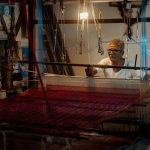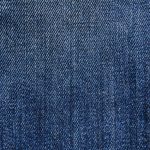When you choose between plain weave and twill weave aramid fiber fabric, you’ll find plain weave offers a tight, uniform structure with excellent abrasion resistance and tensile strength, making it perfect for bulletproof vests and industrial filters. Twill weave, with its diagonal pattern, provides better flexibility, drapability, and wear resistance, ideal for protective clothing and aerospace parts. Understanding these differences helps you select the right fabric for your durability and flexibility needs, with more insights ahead to guide your decision.
Table of Contents
Key Takeaways
- Plain weave features a tight, uniform over-under pattern, while twill weave has a distinctive diagonal texture and slight sheen.
- Plain weave offers superior abrasion resistance and tear strength due to its dense interlacing structure.
- Twill weave provides greater flexibility and drapability, making it suitable for curved or contoured applications.
- Plain weave is ideal for applications requiring high tensile strength and dimensional stability, like bulletproof vests and filters.
- Twill weave excels in wear resistance and stress distribution, favored in protective clothing, aerospace, and automotive parts.
Structural Differences Between Plain Weave and Twill Weave
Although both plain weave and twill weave aramid fiber fabrics serve protective and durable functions, they differ considerably in their structural patterns.
You’ll notice that plain weave features a simple over-under pattern, where each weft thread crosses over one warp thread and then under the next. This creates a tight, uniform grid that feels flat and balanced.
On the other hand, twill weave uses a diagonal pattern, where the weft thread passes over two or more warp threads before going under one or more. This diagonal design gives twill fabrics a distinctive texture and a slight sheen.
Twill weave’s diagonal pattern creates distinctive texture and a subtle sheen, setting it apart from other fabrics.
When you look closely, twill’s diagonal ribs stand out, while plain weave appears more checkerboard-like. These structural differences impact the fabric’s appearance and flexibility.
Strength and Durability Comparison
When you choose between plain weave and twill weave aramid fiber fabrics, understanding their strength and durability differences is essential.
Plain weave offers a tight, uniform structure that provides excellent resistance to abrasion and tearing. Twill weave, with its diagonal pattern, typically shows enhanced strength under stress and better resistance to impacts.
Consider these factors for strength and durability:
- Plain weave’s even interlacing prevents snagging and fraying.
- Twill weave distributes stress more effectively across fibers.
- Twill tends to withstand repeated flexing without breaking.
- Plain weave may have slightly higher tensile strength due to fiber density.
- Both weaves resist chemical damage well, but twill excels in wear resistance.
Knowing these helps you select the right fabric for your specific strength needs.
Flexibility and Drapability of Aramid Fabrics
Since you need fabrics that conform smoothly to shapes, understanding the flexibility and drapability of aramid fabrics is essential.
Plain weave aramid fabrics tend to be stiffer due to their tight interlacing pattern, which limits their ability to bend and drape easily. This makes them ideal when you require firm structural support but less suited for applications demanding fluid movement.
On the other hand, twill weave aramid fabrics offer greater flexibility and drapability because of their diagonal rib pattern, allowing the fabric to contour more naturally around curves.
If your project calls for a fabric that moves and folds with ease, twill weave is likely your better choice. Choosing between these weaves depends on how much flexibility and shaping your application demands.
Abrasion Resistance and Wear Performance
Because your project might face constant friction and wear, understanding the abrasion resistance and wear performance of aramid fabrics is essential.
Plain weave, with its tight, over-under pattern, generally offers excellent abrasion resistance due to its compact structure. Twill weave, featuring a diagonal pattern, provides good wear performance but may show wear signs slightly earlier than plain weave.
Plain weave’s tight pattern excels in abrasion resistance, while twill offers good wear but may wear sooner.
Consider these points when evaluating abrasion resistance:
- Plain weave resists surface wear better thanks to its dense interlacing.
- Twill weave allows better flexibility, which can reduce localized wear.
- Both fabrics are inherently durable due to aramid fibers.
- Twill’s diagonal ribs can deflect abrasion differently than plain weave’s flat surface.
- Your choice depends on balancing durability with fabric movement needs.
This knowledge helps you select the best fabric for long-lasting performance.
Ideal Applications for Each Weave Type
Choosing the right weave type depends largely on your project’s specific demands and environment. If you need maximum strength and stability, plain weave suits you best. For enhanced flexibility and abrasion resistance, twill weave is the way to go. Here’s a quick guide to help you decide:
| Weave Type | Ideal Application | Key Benefit |
|---|---|---|
| Plain | Bulletproof vests | High tensile strength |
| Plain | Industrial filters | Dimensional stability |
| Twill | Protective clothing | Flexibility |
| Twill | Aerospace components | Abrasion resistance |
| Twill | Automotive parts | Enhanced drape |
Frequently Asked Questions
How Does the Cost of Plain Weave Compare to Twill Weave Aramid Fabric?
You’ll find plain weave aramid fabric usually costs less because it’s simpler to produce. Twill weave, with its complex pattern, tends to be pricier due to increased manufacturing time and more intricate weaving processes.
Are There Differences in the Manufacturing Process for Each Weave?
You’ll notice plain weave uses a simple over-under pattern, making it quicker to produce. Twill weave involves a diagonal pattern, requiring more precise control, so its manufacturing takes longer and can be slightly more complex.
Can These Fabrics Be Dyed or Printed Differently?
You can dye or print aramid fiber fabrics, but it’s tricky due to their heat resistance and chemical makeup. You’ll need specialized processes and dyes to guarantee lasting color without damaging the fabric’s strength or performance.
What Are the Environmental Impacts of Producing Each Weave Type?
You’ll find both weaves involve energy-intensive processes, but twill’s more complex weaving might use slightly more resources. However, the difference is minimal; focus more on the fiber production since it impacts the environment the most.
How Do Washing and Care Instructions Vary Between the Two Weaves?
You know what they say, “Don’t throw the baby out with the bathwater.” You’ll want gentler washing for plain weave, while twill’s sturdier pattern handles more robust care, but always avoid harsh detergents and high heat.
- Why Is My Crepe Fabric Puckering? (And 4 Ways to Fix It) - June 23, 2025
- How to Hem a Crepe Dress: 3 Easy Methods for a Professional Finish - June 23, 2025
- The Best Stitches for Crepe Fabric: French Seams, Rolled Hems & More - June 23, 2025







